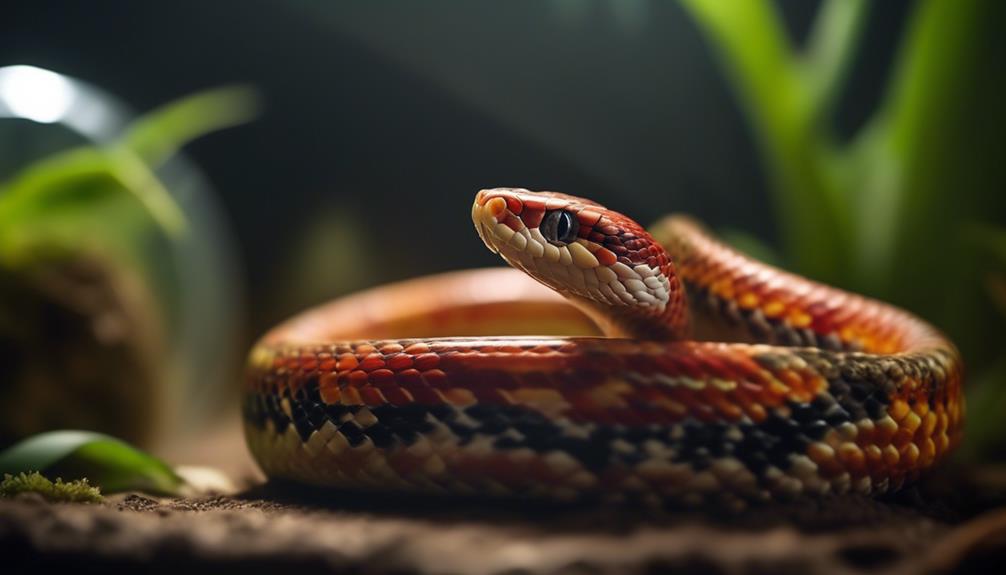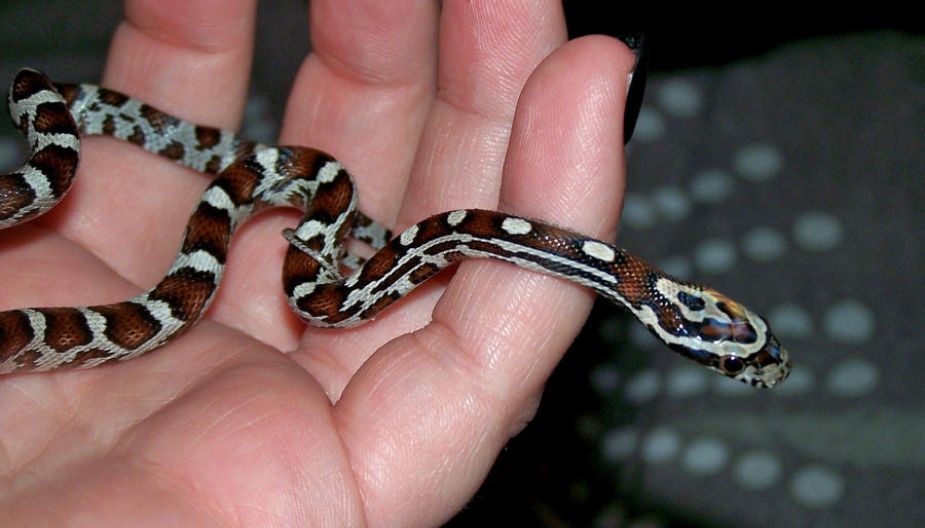Like a well-tended garden, breeding corn snakes requires patience, knowledge, and careful nurturing. Whether you're a seasoned breeder or a newcomer to the world of reptile reproduction, the process of responsible corn snake breeding can be both fascinating and challenging.
To ensure the health and success of your breeding program, it's essential to understand the intricate nuances of the breeding cycle, select suitable breeding pairs, and create optimal breeding conditions. However, there's much more to responsible corn snake reproduction than just pairing up snakes and waiting for eggs.
Understanding the ethical considerations and managing the reproductive health of your snakes are equally crucial aspects that demand attention.
Understanding Corn Snake Breeding Cycles
To successfully understand corn snake breeding cycles, it's essential to grasp the intricate timing and physiological changes that occur in both male and female snakes. Reproductive behavior in corn snakes is influenced by environmental cues such as temperature and photoperiod.
As the breeding season approaches, male corn snakes exhibit increased activity and may cease feeding as they search for potential mates. They release pheromones to attract females and engage in ritualistic courtship behaviors, including rubbing their chin on the female's body.
Female corn snakes, on the other hand, display receptivity to mating by elevating their tails and allowing the male to copulate. Understanding these reproductive behaviors is crucial for successful breeding.
Environmental cues play a significant role in triggering the onset of breeding activity. As the days lengthen and temperatures rise, corn snakes sense these changes and adjust their behavior accordingly.
It's important to mimic these environmental cues in captivity to encourage breeding. By adjusting temperature and light cycles in a controlled setting, breeders can effectively stimulate the breeding behavior of their corn snakes.
Selecting Suitable Breeding Pairs
When selecting suitable breeding pairs of corn snakes, it is crucial to consider factors such as genetic diversity, health, and temperament to ensure successful reproduction. Genetic diversity is essential to maintain a robust and healthy population of corn snakes. When choosing breeding pairs, it's important to consider the genetic makeup of each snake to avoid inbreeding, which can lead to health issues and reduced reproductive success. Additionally, considering color morphs can add an exciting dimension to breeding projects. Pairing snakes with different color morphs can produce visually stunning offspring, adding value to the breeding program.
Consider the following factors when selecting breeding pairs:
| Factor | Consideration |
|---|---|
| Genetic Diversity | Choose snakes with diverse genetic backgrounds. |
| Health | Ensure both snakes are healthy and free from disease. |
| Temperament | Select snakes with compatible temperaments. |
Creating Optimal Breeding Conditions
Creating optimal breeding conditions for corn snakes involves maintaining specific environmental parameters to ensure the health and reproductive success of the breeding pair.
Firstly, maintaining temperature is crucial. Corn snakes require a temperature gradient in their enclosure, with a warm side ranging from 85-90°F and a cooler side around 75-80°F. This temperature differential is essential for thermoregulation and digestion.
Additionally, regulating humidity levels is vital. Aim for a humidity range of 40-60% to support proper shedding and prevent respiratory issues.
Encouraging natural behaviors is also important. Providing climbing branches, rocks, and other enriching elements in the enclosure can stimulate natural activities and reduce stress.
Finally, providing appropriate hiding spots is essential for ensuring the snakes feel secure. This can include caves, hollow logs, or commercial snake hides. These hiding spots are crucial for reducing stress and providing a sense of security for the breeding pair.
Managing Corn Snake Reproduction Health
For ensuring the optimal health of your corn snake during reproduction, it's essential to closely monitor their diet and physical condition. Reproductive health is crucial for breeding success. Start by ensuring that your corn snake is in prime physical condition before the breeding process begins. Monitor their weight, and ensure that they're neither underweight nor overweight, as this can affect their reproductive capabilities.
A well-balanced diet is essential for maintaining their overall health. Offer a diet that includes a variety of prey items to ensure they receive all the necessary nutrients. Additionally, ensure that your snake has access to clean water at all times. Regular health check-ups with a reptile veterinarian can also help in identifying and addressing any underlying health issues that may affect their reproductive health.
Stress can also have a significant impact on reproductive success, so provide a calm and secure environment for your snake. By paying close attention to your corn snake's reproductive health, you can increase the likelihood of successful breeding outcomes.
Ethical Considerations in Corn Snake Breeding
Ensuring the optimal health of your corn snake during reproduction involves not only monitoring their diet and physical condition but also addressing the ethical considerations associated with corn snake breeding practices.
Ethical breeding practices are crucial for maintaining the welfare of the corn snake population and ensuring that breeding efforts are responsible and sustainable. As a breeder, it's essential to prioritize the well-being of the snakes and to avoid practices that could potentially harm the animals.
This includes providing adequate housing, nutrition, and veterinary care, as well as ensuring that breeding is done with the intention of preserving the species and improving genetic diversity. It's important to be mindful of the potential consequences of breeding, such as overpopulation and the potential for producing unhealthy offspring.
Responsible breeders strive to contribute to the conservation of corn snake species, making ethical considerations an integral part of their breeding practices. By upholding ethical standards in breeding, you can play a significant role in promoting the health and sustainability of corn snake populations.
Conclusion
Now that you have mastered the art of responsible corn snake reproduction, you're ready to embark on a journey of nurturing new life.
Just as the corn snake sheds its old skin to reveal a vibrant new one, you have the power to bring forth new generations of these beautiful creatures.
With careful consideration and ethical practices, you can ensure the health and wellbeing of both the parent snakes and their offspring, creating a legacy of conservation and care.


